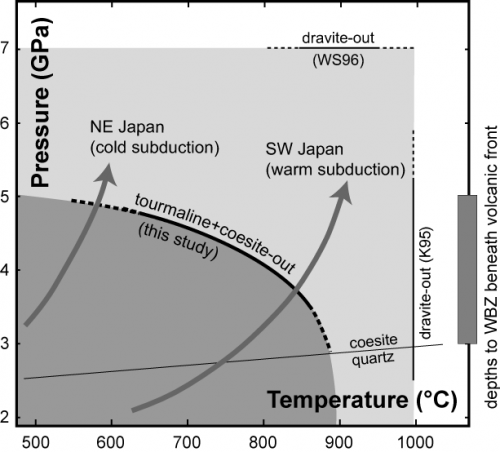Tourmaline and boron cycling though subduction zones
Pressure-temperature conditions of tourmaline breakdown in a metapelite were determined by high-pressure experiments. Between 4.5 and 5 GPa at 700 °C, between 4 and 4.5 GPa at 800 °C, and between 800 and 850 °C at 4 GPa, modal proportions of tourmaline clearly decrease with decreasing modal abundance of coesite, increasing that of clinopyroxene, garnet and kyanite, and increasing boron content of phengite. These changes suggest that, with increasing pressure and temperature, tourmaline reacts with coesite to produce clinopyroxene, garnet, kyanite, and boron-bearing phengite and fluid. It is most likely that subducting sediments should release boron-rich fluids by tourmaline breakdown before reaching depths of 150 km, in even cold subduction zones, but a significant amount of boron partitioned into phengite could be transferred into further depths.

References:
- Tsutomu Ota, Katsura Kobayashi, Tomoo Katsura, Eizo Nakamura. Tourmaline breakdown in a pelitic system: implications for boron cycling through subduction zones, Contributions to Mineralogy and Petrology, 155, 19-32 (2008). doi:10.1007/s00410-007-0228-2, dream/20100403102546564.admin.